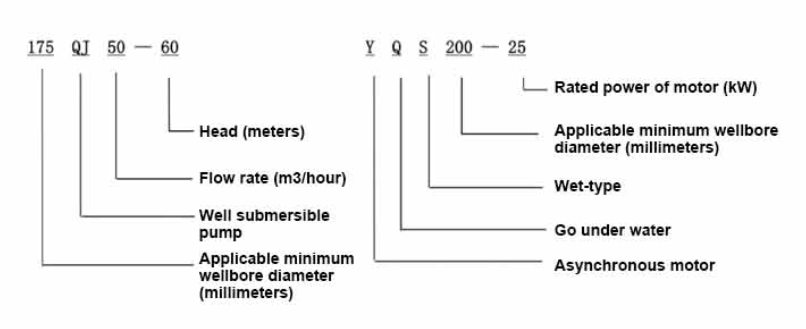nov. . 19, 2024 13:41 Back to list
Electric Submersible Pumps for Efficient Water and Fluid Transfer Solutions
Submersible DC Pumps An Overview
Submersible DC pumps are an innovative solution for fluid transfer in various applications, ranging from agricultural irrigation to wastewater management. These pumps operate underwater, encapsulated in a casing that protects their electrical components. DC (direct current) motors power them, making them particularly energy-efficient, and they can be employed in both residential and industrial settings.
Advantages of Submersible DC Pumps
One of the primary advantages of submersible DC pumps is their efficiency. Because the motor is submerged, these pumps can operate at optimal performance levels, requiring less energy to move water compared to traditional pumps. This energy efficiency is crucial in reducing operational costs, especially in applications with continuous use, such as aquaculture or groundwater extraction.
Furthermore, the design of submersible pumps allows for a compact installation. They can be easily dropped into a well, pond, or any body of water, reducing the need for extensive infrastructure or modification of existing systems. This makes them ideal for remote locations where traditional pumping systems might be impractical or too costly to implement.
Applications
Submersible DC pumps are used in a variety of applications. In agriculture, they are used for irrigation systems, pumping water from wells to fields, ensuring crops receive the necessary hydration. In the realm of aquaculture, these pumps help maintain water circulation and oxygen levels, promoting a healthy environment for fish and other aquatic organisms.
In urban settings, submersible DC pumps play a crucial role in wastewater management. They are used to transport sewage and stormwater to treatment facilities, minimizing the risk of flooding during heavy rainfall. Additionally, they are instrumental in dewatering applications at construction sites, making them invaluable in civil engineering projects.
submersible dc pump

Technical Features
Submersible DC pumps come equipped with various technical features that enhance their functionality. Many models incorporate a float switch, which automatically turns the pump on or off based on the water level. This feature prevents over-pumping and dry running, extending the lifespan of the pump.
Moreover, these pumps are often designed with corrosion-resistant materials, enabling them to operate in harsh environments without degradation. This robustness is essential when dealing with brackish water or chemically-laden waste, ensuring reliable performance over time.
Environmental Considerations
With increasing awareness about environmental impact, submersible DC pumps have gained popularity as a more sustainable option. Their energy-efficient design contributes to lower carbon emissions compared to traditional AC-powered pumps. Many models also support renewable energy sources, such as solar panels, further reducing their ecological footprint.
The low noise level of submersible pumps is another significant benefit. Unlike surface pumps that can create considerable noise pollution, submersible pumps operate quietly, making them suitable for residential areas and wildlife habitats.
Conclusion
Submersible DC pumps represent a significant advancement in pump technology. Their energy efficiency, compact design, and versatility make them suitable for a wide range of applications, from agriculture and aquaculture to wastewater management and construction. With a growing focus on sustainability, these pumps are an excellent option for those looking to reduce their environmental impact while maintaining efficient water management systems. As technology continues to evolve, we can expect further innovations in the design and capability of submersible DC pumps, reinforcing their vital role in a sustainable future.
-
Water Pumps: Solutions for Every Need
NewsJul.30,2025
-
Submersible Well Pumps: Reliable Water Solutions
NewsJul.30,2025
-
Stainless Steel Water Pumps: Quality and Durability
NewsJul.30,2025
-
Powerful Water Pumps: Your Solution for Efficient Water Management
NewsJul.30,2025
-
Oil vs Water Filled Submersible Pumps: Which is Better?
NewsJul.30,2025
-
Deep Well Pumps: Power and Reliability
NewsJul.30,2025
-
 Water Pumps: Solutions for Every NeedWhen it comes to handling dirty water, the dirty water pump is a must-have.Detail
Water Pumps: Solutions for Every NeedWhen it comes to handling dirty water, the dirty water pump is a must-have.Detail -
 Submersible Well Pumps: Reliable Water SolutionsWhen it comes to ensuring a reliable water supply, submersible well pumps are a top choice.Detail
Submersible Well Pumps: Reliable Water SolutionsWhen it comes to ensuring a reliable water supply, submersible well pumps are a top choice.Detail -
 Stainless Steel Water Pumps: Quality and DurabilityWhen it comes to choosing a water pump, the stainless steel water pump price is a crucial factor.Detail
Stainless Steel Water Pumps: Quality and DurabilityWhen it comes to choosing a water pump, the stainless steel water pump price is a crucial factor.Detail
